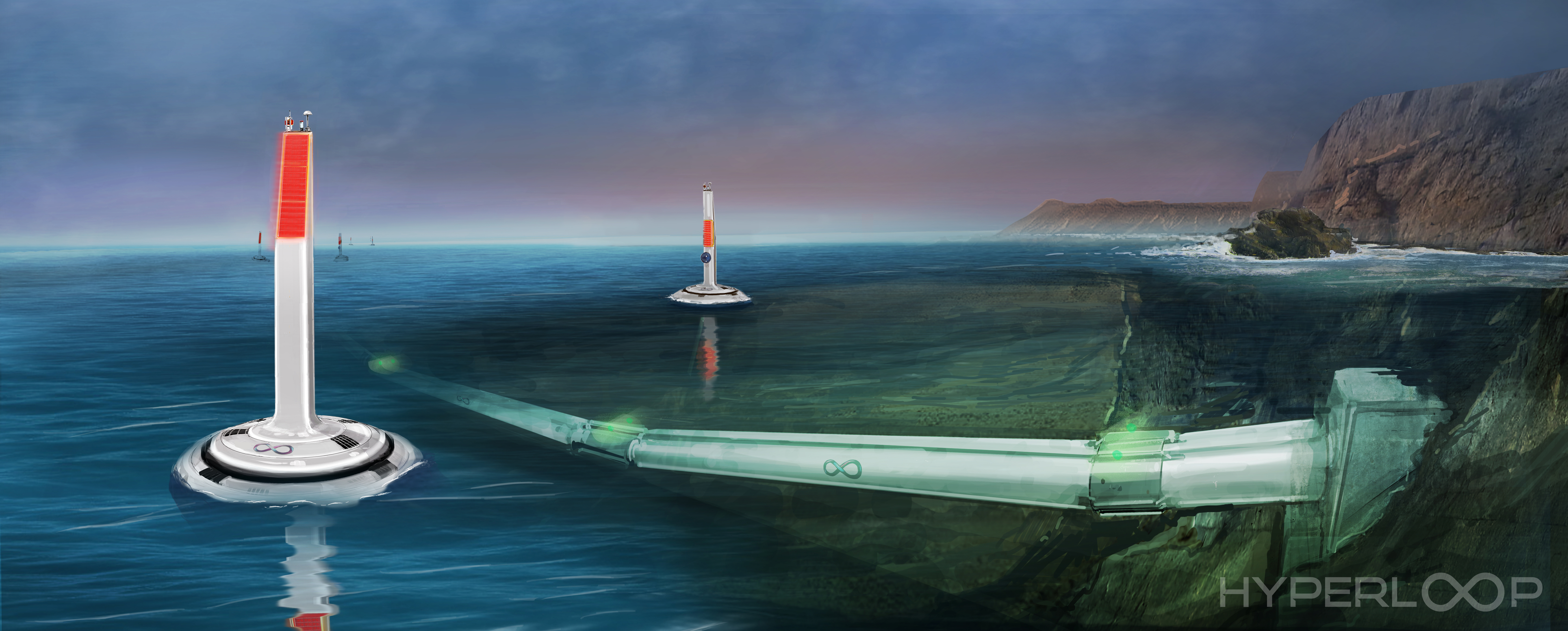Hyperloop One Wants to Do Underwater Transport, Once It’s Affordable

The Hyperloop One had its first successful test run last month, and the high speeds that magnetic propulsion can provide sure do seem like the wave of the future. Even though the Hyperloop One travels at over 100 miles per hour, you’d hardly notice the speed once you’re on board, since it’s a straight shot. But what about traveling underwater? Is that possible? Apparently, yes.
Hyperloop One CTO Brogan BamBrogan told Science Friday about some of the development plans for the project, which do include potential underwater pathways for the transport tubes: “We think we can deliver things people don’t even know they want yet, and that’s going to manifest itself in a lot of ways. So I think we will see some above-grade systems, we’re definitely going to see tunneled systems, and we also want to see some underwater systems.”
All of this is already possible, according toBamBrogan. The only limit is the cost, he explained: “We could build a Hyperloop today; it would just be very expensive.” The goal for now is to make the Hyperloop One more “cost-competitive” when taken in comparison with other forms of transportation technology.
Doesn’t seem like it would take much to beat planes, since airlines have been struggling financially for decades. Hyperloop technology has the benefit of not relying on traditional fuel methods like an airplane would, but it does require electricity; past proposals for the transport have suggested solar panels as a method for offsetting the costs. The original plans for the Hyperloop proposed that it would be able to go twice as fast as a plane.
I mentioned up top that because the Hyperloop One is a straight shot, it won’t make you feel motion-sick to ride on it. However, BamBrogan does say in the interview that they’ll be developing ways to allow the Hyperloop One to turn and redirect itself, meaning that there will be some acceleration and deceleration happening that could cause the usual motion sickness that you’d experience with other forms of transportation. Still, those changes in direction probably wouldn’t feel so different from how you already might feel in an airplane or on a high-speed train, and ideally, the result would be a more energy-efficient ride.
If you’d like to hear the entire interview, with tons more details about the Hyperloop One’s plans, listen below:
Traveling underwater in a high-speed train might sound scary, but we already travel in underwater tunnels all the time in ordinary trains and cars. Doesn’t seem like solar panels would work when it comes to propelling an underwater Hyperloop One tube, though, so I guess those engineers will have to come up with some other way to make that aspect more cost-efficient.
(via The Next Web, image via Hyperloop One)
—The Mary Sue has a strict comment policy that forbids, but is not limited to, personal insults toward anyone, hate speech, and trolling.—
Follow The Mary Sue on Twitter, Facebook, Tumblr, Pinterest, & Google+.
Have a tip we should know? tips@themarysue.com